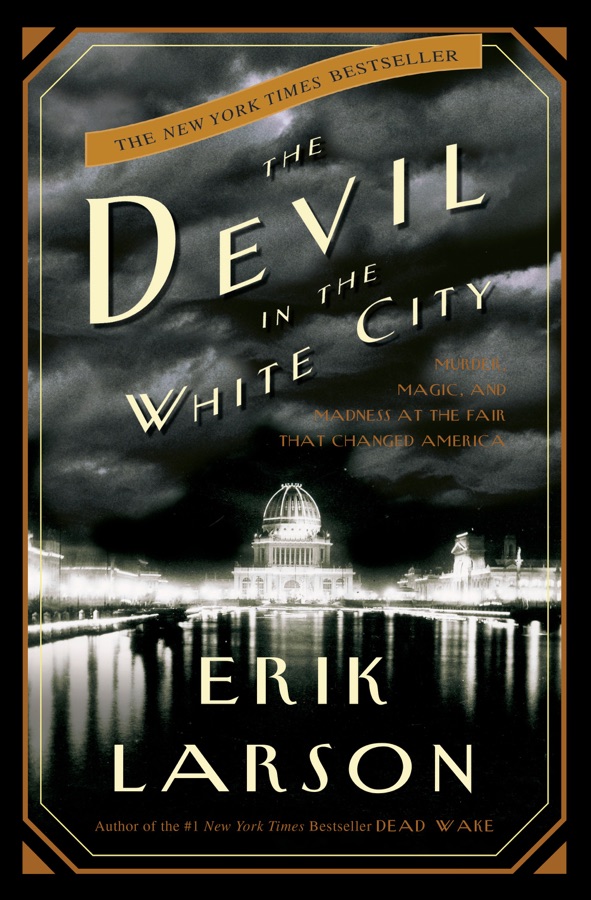Book review: The Devil in the White City by Erik Larson

The Devil in the White City is two stories expertly weaved together. The first story is the tale of the Devil - H.H. Holmes, a con artist and one of America’s first serial killers. Holmes had quite the twisted story - insurance fraud, unethical medical experiments, bigamy, and murder are just a short list of the nefarious things that later made him infamous.
The second revolves around the 1893 Columbian Exposition in Chicago. While I find some true crime stories fascinating, the White City is what really drew me to this book.
Now that I am a resident of Chicago, Erik Larson has me longing to go back in time to see the White City. I would, of course, do my best to stay far away from the murdering H.H. Holmes. I think of how much fun it would be to experience the fourteen “great buildings” in all their glory, stare at the first Ferris wheel (no way am I riding that thing!), try a sample of the newly-introduced Cracker Jack, or see a performance by Houdini himself.
Sadly1, due to a fire in 1894 only two buildings still remain. The Palace of Fine Arts is now known as the Museum of Science and Industry and the World’s Congress Auxiliary Building is the Art Institute of Chicago. I haven’t had a chance to visit either building but they’re both on the short list of post-pandemic sights.
Erik Larson’s uncanny ability to find bits of information and knowledge that in most cases is lost to time immersed me fully into the late 19th century. A superb blend of history, architecture, innovation, and tragedy make this one of the most compelling nonfiction reads in recent memory.
-
I say sadly but I also find it remarkable. I grew up in the Houston, TX metro area where just about anything old got torn down and replaced with something new and ugly. Sure, Houston has history but you’ll be hard-pressed to find anything left from the 19th or early 20th centuries. ↩